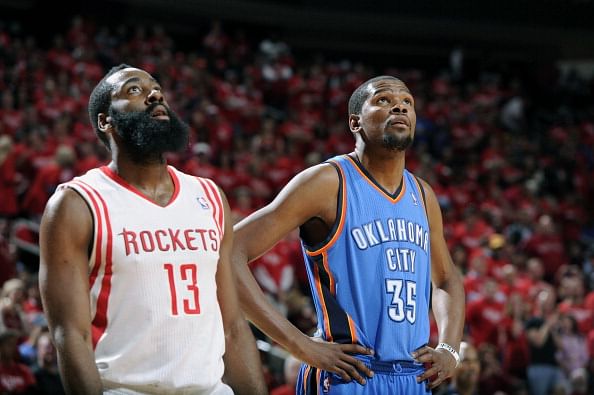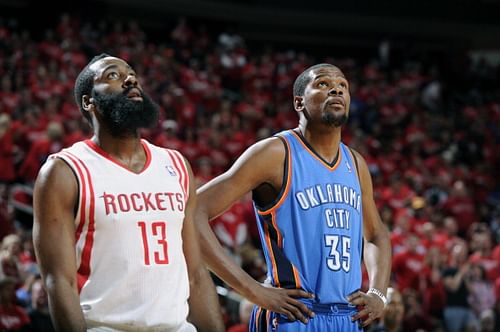
How to create a monster in your own backyard: Revisiting the James Harden trade a year on

With Dwight Howard selecting the Houston Rockets after a few rather torrid seasons at Orlando followed by a singular one at Los Angeles, the NBA officially now has a new monster. Houston affords Howard a fresh start, unadulterated adulation from a fan base that will see him as the next Hakeem Olajuwon. Most importantly, he doesn’t have to do it alone. He now shakes hands with the talented Mr. James Harden to provide probably one of the most lethal 1-2 punches in the league.
But this piece is not about Howard or Houston or the torment he caused to his previous employers, or the thousands of Laker fans who now feel betrayed by his decision to quit on Los Angeles. This is a story of how a franchise based in the quiet little city of Oklahoma managed to create a monster in its own backyard.
The news of D12’s move to Houston just pours more fuel into the disaster of a trade that happened about a year ago when Oklahoma City traded James Harden to the Houston Rockets after failing to come to financial terms. With Kevin Martin, one of the centre-piece of the deal (and the de-facto Harden replacement last season) also bolting for Minnesota, the deal looks ever so shabby from the Oklahoma point of view.
Let’s roll it back a year. June 21, 2012:
LeBron James and the Miami Heat were up in raptures as the “King” vindicated his decision of taking his services to South Beach. In 5 games, the Miami Heat had swept aside the newly emerging and ever threatening power from the Western Conference, the Oklahoma City Thunder. Even while the disappointment of losing the finals (the franchisee’s first since moving to Oklahoma City) engulfed the players as well as the city, the light of hope for the future glowed ever so brighter within. This was not a one-off thing. It was not supposed to be.
The reasons to be optimistic about the future far outweighed the disappointment of losing the finals. The team from Loud City was only scratching the surface of its potential. Built around Kevin Durant, a superstar at only 23 years of age, and under the tutelage of Scott Brooks, the Thunder had become a force to be reckoned. We had a team whose average age of the core group of players’ was 23 and just coming off a NBA Finals appearance.
In three consecutive years in the draft, Sam Presti was able to add three all-stars in the form of Durant, Westbrook and Harden, and by 2012, they had just started to push on the accelerator. The word “dynasty” was slowly but surely being whispered around in the NBA circles when it came to describe the future of the team from Oklahoma.
Then the Harden thing happened. The Thunder management had thought Harden would take a pay cut after Serge Ibaka himself signed a 4-year, $48 Million deal in a world where the likes of Brook Lopez and Roy Hibbert warranted deals worth $60 million. However, when Harden was offered a deal of around $11 million/year, the southpaw, who was coming off a year in which his 16.8 ppg, 4.1 rpg and 3.7 apg stat line in 31 mins per contest garnered him a sixth man of the year recognition, bolted.
Harden wanted the big pay day for himself, and deservedly so. He was the soul of the team, giving the opposition no respite even when Durant was not on the court. He was the main player through which the offense flew, when Durant and Westbrook had to take time on the bench. However, Presti wasn’t convinced (yet) whether Harden was the “man”. Instead of making moves to accommodate Harden on the team, the Thunder GM would make a decision that would change the NBA landscape as we know it.